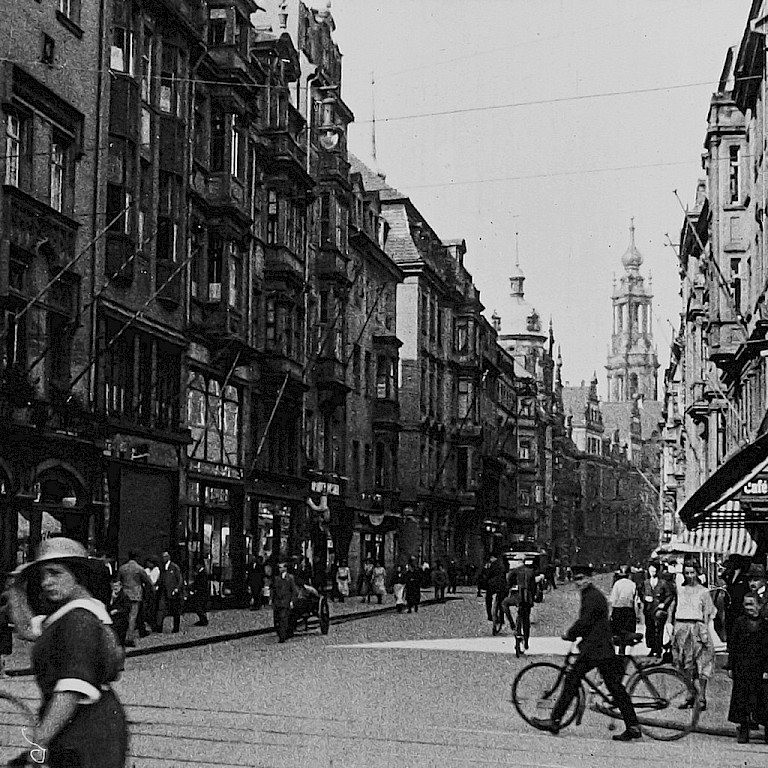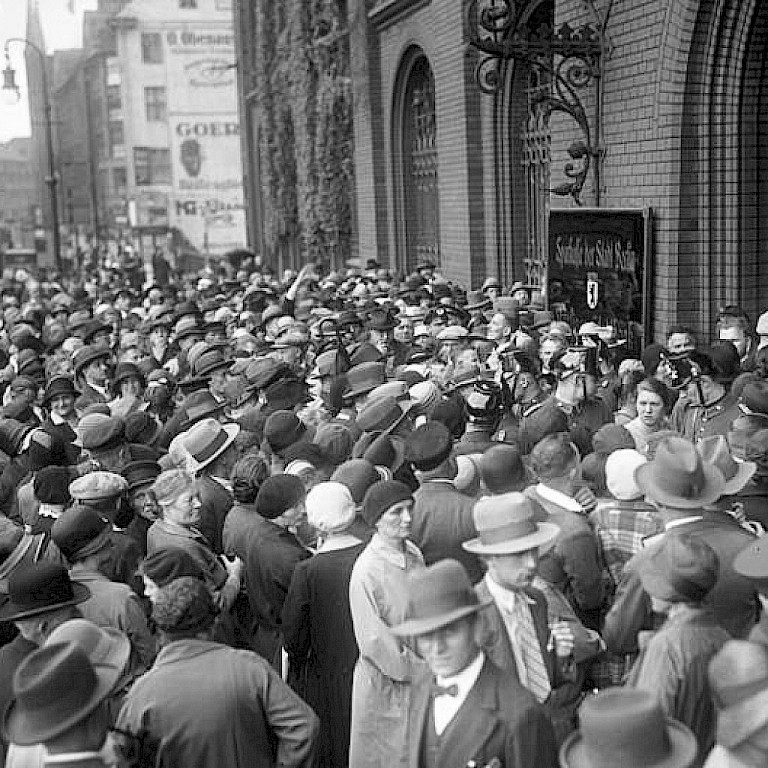
Szene aus dem Dokumentarfilm „Dresden, das Elbflorenz und seine Umgebung": Blick in die Schloßstraße. Um 1925
Foto: © SLUB / Deutsche Fotothek / Borchert, Christian

Massenandrang bei der Berliner Sparkasse nach Schließung der Banken. 13. Juli 1931
Bundesarchiv, Bild 102-12023 / Georg Pahl / CC-BY-SA 3.0
Filmausschnitt: Historische Stadtrundfahrt, 1925
© Filmarchiv Hirsch-Film Dresden
05 THE “GOLDEN TWENTIES”
The oldest film clip dates back to 1903 when cameras were still an absolute rarity.
Photo and film cameras came onto the market in the 20s. They were handy and above all affordable. Enthusiasm for moving pictures could be seen in the number of cinema visits. The “Film theatre Schauburg” located on Königsbrücker Street opened in 1927 and is still there today.
One year earlier, two traditional Dresden companies merged with other companies from the photo industry to form a joint stock corporation: The “Zeiss Ikon AG” had its headquarters in Dresden and quickly became one of the most important manufacturers of cameras, projectors and cine film equipment.
Dresden was innovative and trendsetting which also had an impact on culture. Dance, painting, theatre, and architecture showed Dresden to be a centre of contemporary fine arts.
The 1920s also had a dark side though. Recurring economic slumps, inflation, and a world-wide recession from 1929 onwards, created social upheavals in the Weimar Republic that the government couldn’t counteract.
Political parties on the extreme right fringes of the political spectrum were particularly benefitting from growing discontent, mass unemployment, impoverishment of many people and the governments tough austerity measures.
While the Communist Party fought mainly against the ruling Social Democrats, extreme right-wing parties like the NSDAP were attracting attention with populist slogans and conspiracy myths. The National Socialists claimed that a Jewish-Bolshevik conspiracy was the reason for the crisis in the country. With the “stab-in-the-back-legend” the alleged Jewish-Bolshevik conspiracy – they also exploited the general disappointment about losing the war in 1918.
The NSDAP were ultimately able to get the upper middle class and the middle class to follow them by promising to lead them to a new national greatness in the form of national community. In the elections of 1932, it was by far the strongest party. On the 30th of January 1933, President of the Reich, Paul von Hindenburg appointed Adolf Hitler, the chairman of the NSDAP, as the new Reich Chancellor. He governed for 12 years without democratic legislation, without parliamentary control and under brutal suppression of any opposition.
The next exhibition room, which we will now enter, deals with the consequences of the National Socialist power.